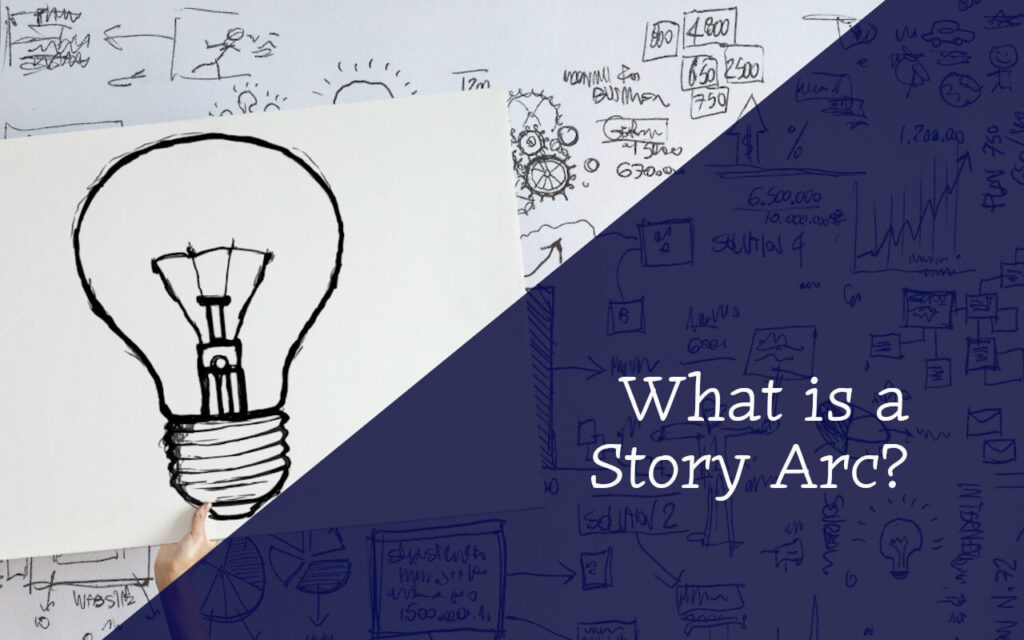Story arc (or narrative arc) is the structure and shape of a story. Understanding the elements of a story arc will go a long way toward helping you plan and write your novel.

Typically, there are around five significant events in any story. It can be easy to think of these events as big moments, but often they can be small but impactful moments. Sometimes they are more than one moment or more than one scene. How much emphasis you put on any of these moments and how much page space you use to deliver it will depend on your story needs.
Elements of a Story Arc
The Inciting Incident is the event that launches the story. It changes the life of the protagonist and pushes them towards their first hurdle. It could be something big like a near death experience, or small like not getting the grade they’d hoped for. In either scenario, this moment acts as the first domino that starts the cascade.
Turning Points are also called plot points. The turning points are significant moments in the story that add to the conflict the protagonist faces. Most stories will have more than one turning point but exactly how many is up to you and your story needs.
The All Is Lost Moment is also called the crisis. It is the moment in which the protagonist loses hope. They can no longer rely on any of the things they have relied upon up to this point. The all is lost moment often reflects the novel’s theme and shows the protagonist questioning themselves and all of their choices.
The Climax is when the central conflicts come to a head and the protagonist is pushed to change. They have faced whatever hurdles arose in their all is lost moment and found the strength to carry on.
And finally, the Resolution is the conclusion of the story’s plot. It shows how the protagonist has changed since the inciting incident and ties up any loose ends.
How These Elements Help
As a writer, I’m sure you’ve heard of the three-act structure. This refers to the beginning (set-up), middle (development), and end (climax) of a story. Each of the above elements of a story arc can be separated into one of these acts. The inciting incident is the beginning, the turning points and dark moment are the middle, and the climax and resolution are the end.
There are lots of ways to play around with these moments in your novel and they don’t necessarily have to happen in the order they are presented here. But regardless of how they are presented to the reader, being able to identify each of the significant events in your novel will help you ensure you haven’t missed anything important.
Identifying these events will also help during the outlining stage. If you know what these moments are in your story, it will be easier for you to figure out what types of scenes you will need to use get from one event to the next.
Do you have any questions about story arcs? If so, drop them in the comments.

3 thoughts on “Understanding the Elements of a Story Arc”